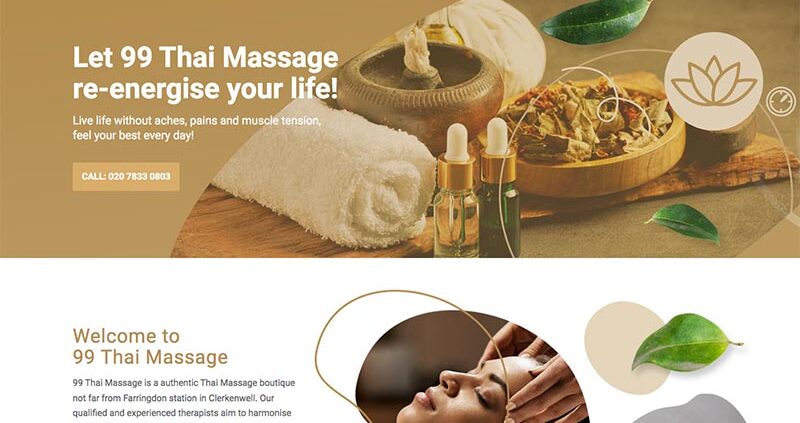Crafting an Inviting and Informative Thai Massage Website: Step-by-Step Guide
Designing a website for a Thai massage business should reflect the soothing and therapeutic nature of your services while providing essential information to potential clients. Here’s a step-by-step guide on how to design an effective Thai massage website:
- Define Your Brand and Goals:
- Determine your brand identity, including your logo, color scheme, and overall style.
- Set clear goals for your website, such as promoting services, attracting new clients, and providing information.
- Select a Domain Name and Hosting:
- Choose a domain name that reflects your business name or services.
- Select a reliable web hosting provider that offers fast loading times and good uptime.
- Plan the Website Structure:
- Create a sitemap to outline the main pages of your website. Common pages for a Thai massage website include Home, Services, About Us, Contact, Testimonials, Blog, and Book Appointment.
- Ensure easy navigation and user-friendly menus.
- Choose a Website Builder or Platform:
- Select a website builder or content management system (CMS) that suits your needs. Popular options include WordPress.
- Pick a responsive and mobile-friendly theme or template.
- Design Elements:
- Use a calming colour palette that reflects the essence of Thai massage, such as earthy tones and soft pastels.
- Incorporate high-quality images of your massage studio, therapists, and serene settings.
- Include relaxing typography that is easy to read.
- Content Creation:
- Write compelling and informative content about your services, benefits of Thai massage, and the qualifications of your therapists.
- Maintain a blog to share articles about health, wellness, and self-care related to massage.
- Contact Information:
- Provide clear contact information, including your physical address, phone number, email address, and a contact form.
- Consider adding a map to help clients find your location easily.
- Testimonials and Reviews:
- Showcase reviews and testimonials from satisfied clients to build trust.
- Include before-and-after photos if available.
- Social Media Integration:
- Link your social media profiles to your website.
- Add social sharing buttons to encourage visitors to share your content.
- SEO Optimization:
- Optimize your website for search engines by using relevant keywords in your content and meta tags.
- Ensure fast loading times and mobile responsiveness, as these factors influence search engine rankings.
- Privacy and Security:
- Implement security measures to protect client information if you offer online booking and payment processing.
- Include a privacy policy.
- Contact Form and Live Chat:
- Offer a user-friendly contact form for inquiries.
- Consider adding a live chat feature for real-time customer support.
- Legal Compliance:
- Ensure your website complies with local and international laws, including data protection regulations.
- Regular Updates:
- Keep your website updated with fresh content, promotions, and news.
- Monitor and analyze website traffic to make improvements over time.
- Mobile Optimization:
- Test your website on various devices to ensure it functions well on smartphones and tablets.
- Accessibility:
- Make your website accessible to individuals with disabilities by following web accessibility guidelines.
- Marketing and Promotion:
- Promote your website through online and offline marketing channels, including social media, email marketing, and local advertising.
By following these steps, you can create a visually appealing and user-friendly Thai massage website that effectively represents your business and attracts clients.
Here are some websites we have created:



